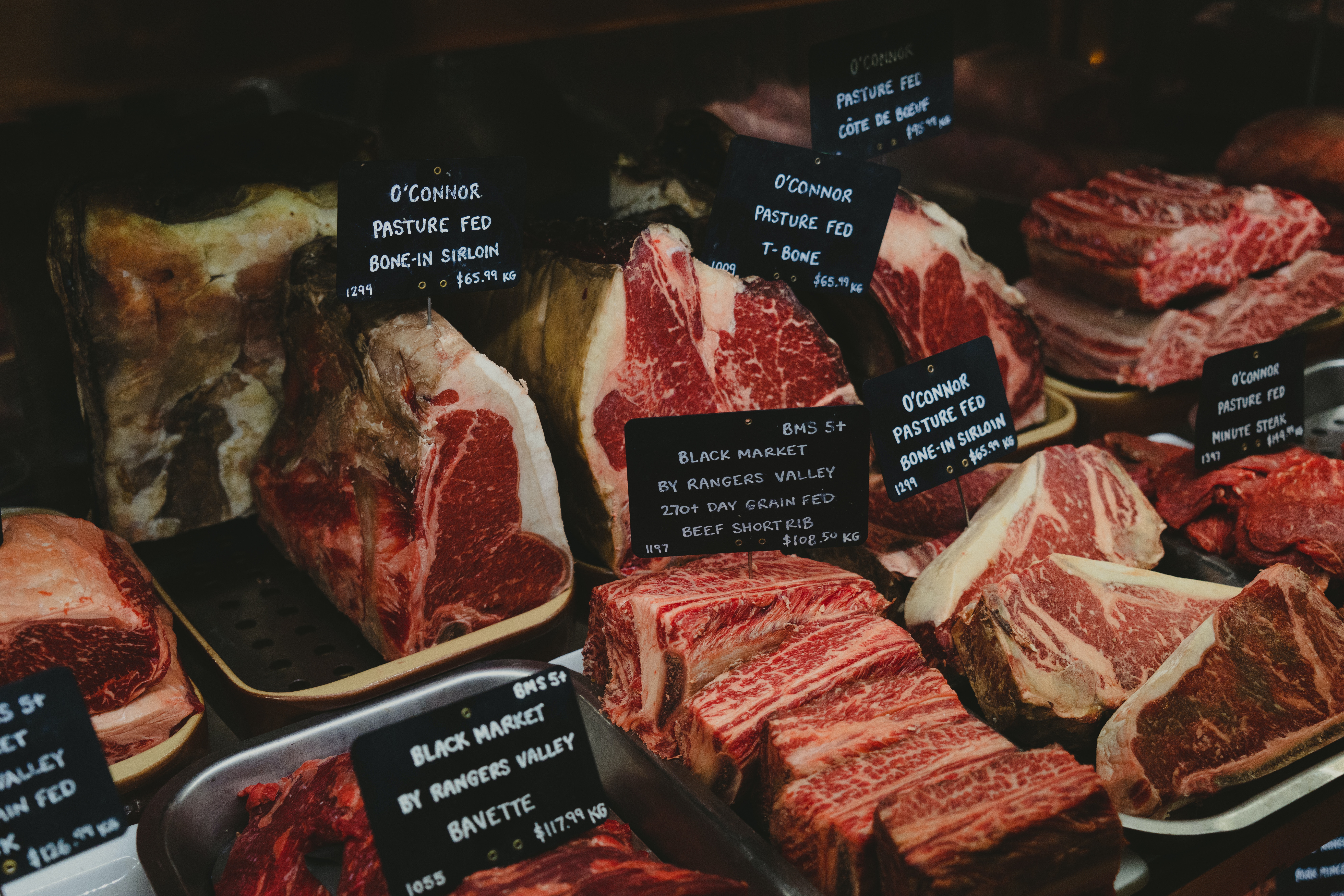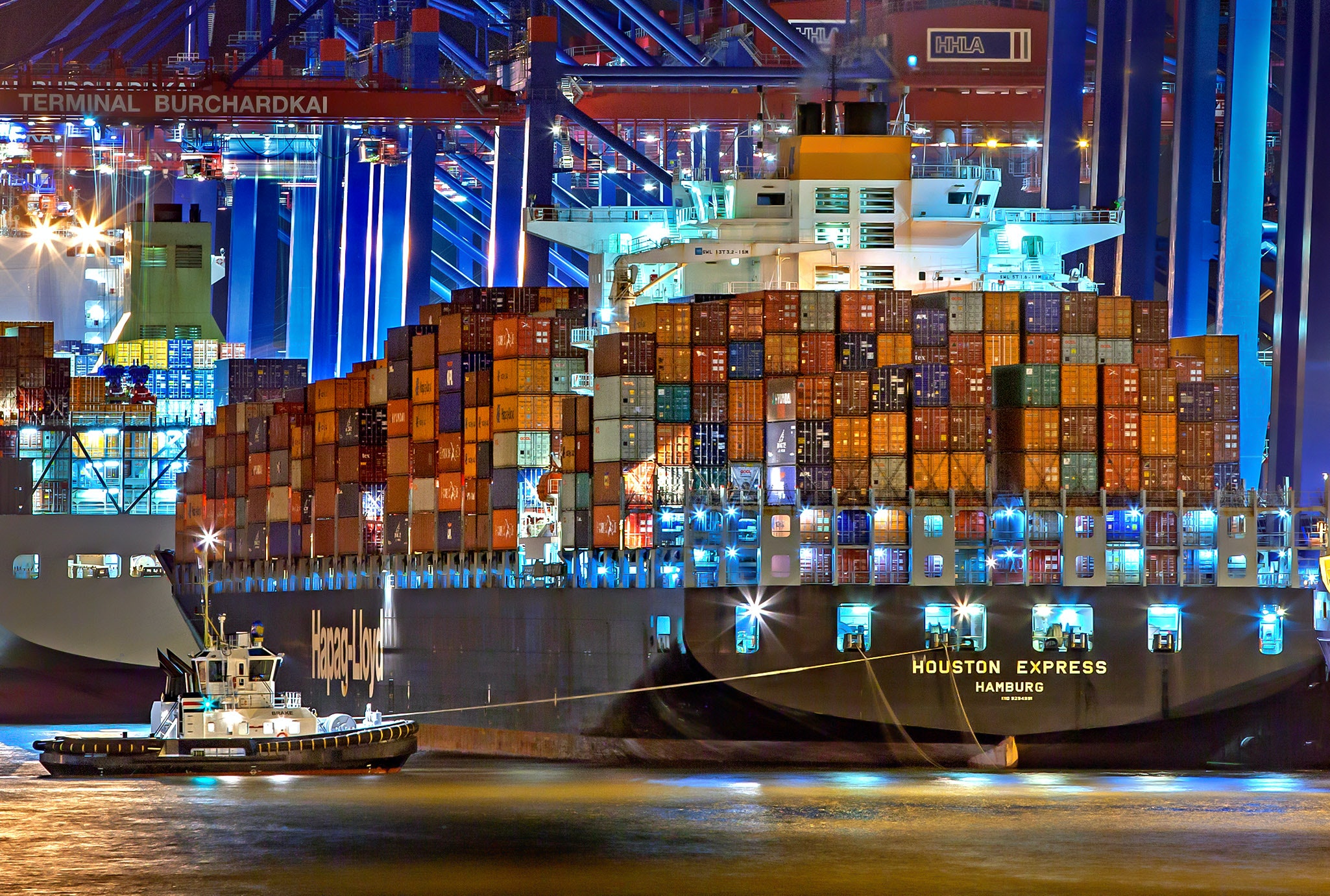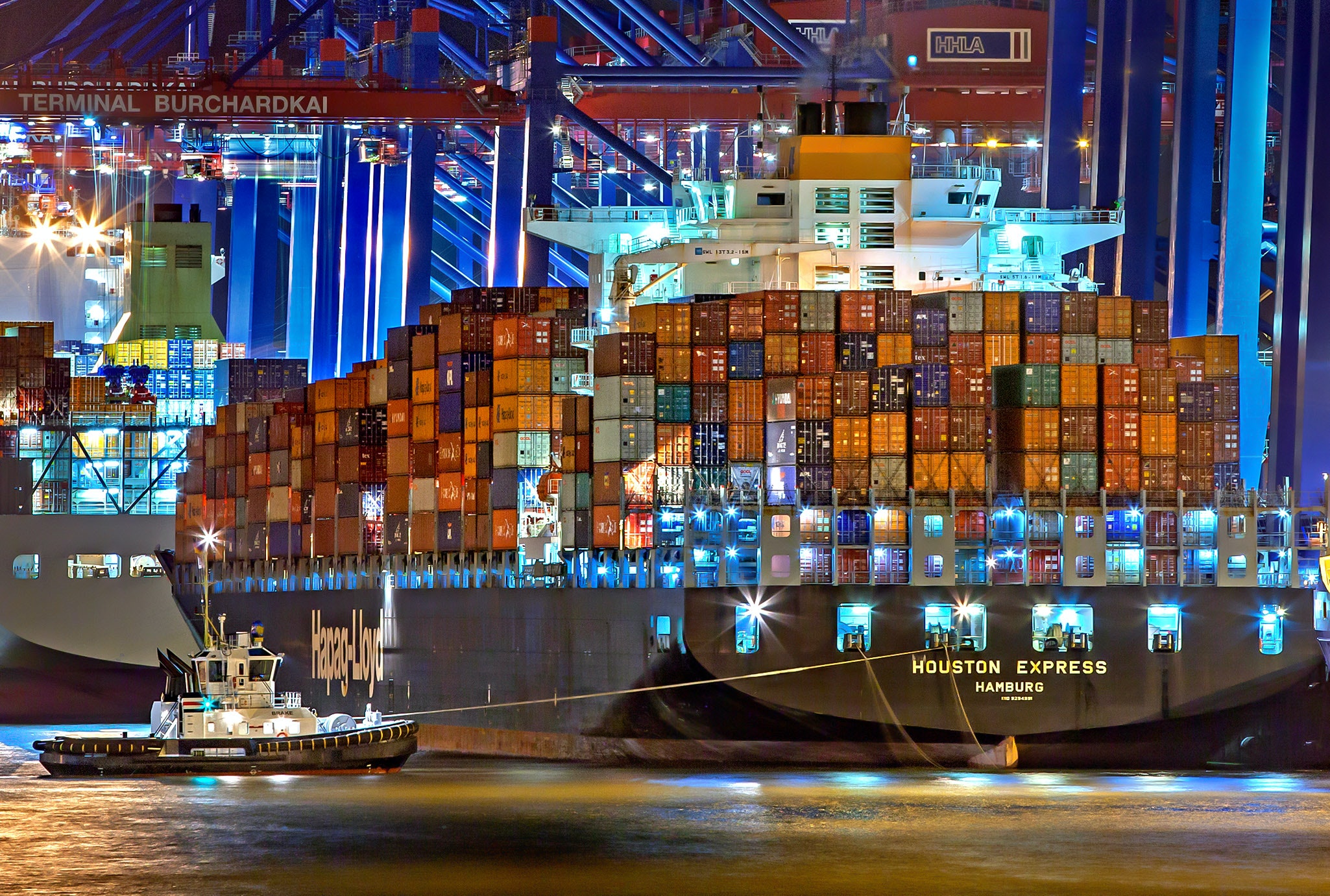Fraud is a problem that blights most industries in some form, and the food sector is no exception. But what can you do to identify and prevent it from occurring in your own supply chain? Here's our insider guide to food fakes and the risks they can bring to your business.
The food industry thrives on trust - the trust between supplier and manufacturer, manufacturer and retailer, and of course retailer and consumer. If anyone breaks that trust by supplying a product that isn't as stated, then the entire supply chain breaks down.
COVID-19 and supply chain shortages have tested that trust to the limit, with the industry under pressure to meet consumer demand and manage tightening profit margins.
The rise of food fraud is a harmful consequence of these challenges, with the push for lower prices leading some to explore illegal means of achieving higher yields. These include mislabelling or stretching products with unauthorised additives.
What is the impact of food fraud?
Food fraud is defined by Europol and Interpol as "the deliberate placing on the market, for financial gain, foods which are falsely described or otherwise intended to deceive the consumer."
With Operation OPSON, a joint Europol-Interpol operation, seizing 27,000 tonnes of fraudulent food between December 2021 and May 2022, it's clear that food fraud is big business.
This consistent global problem impacts different food products and supply chains. The Horsemeat scandal of 2013 is a case in point. A prime example of food fraud in both the UK and Europe, it led to significant changes and the establishment of the National Food Crime Unit by Professor Chris Elliott.
Other examples included the 2008 Chinese milk scandal when milk powder contaminated with the toxic chemical melamine made 300,000 ill children and infants sick. And of course, this year's meat scandal (codenamed Operation Hawk) where beef labelled as from the UK was actually from South America and Europe.
So what are the main reasons for committing food fraud?
Addressing food fraud requires an understanding of the main reasons behind a fraudulent act. Some primary motivations include financial gain, misleading consumers, and malicious intent.
Financial gain
Sadly, there is opportunity for significant financial gain in the world of food fraud. Adulterating products with lower-quality or cheaper ingredients cuts production costs. Producing counterfeit product versions allows producers to charge more for substandard goods.
Misleading consumers
Another notable reason for food fraud is the desire to mislead. Fraudsters take advantage of consumers with specific brand preferences. False claims and deceptive marketing tactics can present products as meeting ethical or quality standards - either by mislabelling or misrepresentation.
Malicious intent
The drive for malicious intent can lead fraudsters to deliberately harm companies, consumers, or public institutions.
Malicious acts include tampering with food products, engaging in extortion schemes, or harmful substance contagion. Common reasons can be personal revenge against a business or even an act of terrorism.
What are the main risks associated with food fraud?
Food fraud can become a food safety issue if it causes harm to consumers through toxic substance exposure. There are also financial risks to consider.
Health, safety & financial risks
Health and safety risks include allergic reactions to unauthorised ingredients, foodborne illness outbreaks, and low-dose contaminant exposure (such as pesticides or heavy metals).
There is also a huge range of economic impacts arising from food fraud. For legitimate food producers, the risks include reduced sales and revenue. Detecting food fraud in the market may cause expensive product recalls, and in some cases, food products are destroyed to protect consumers and brand reputation.
Supply chain disruptions are another financial risk. Product shortages, logistical challenges, and production delays all have financial implications. Businesses may also struggle to source alternative suppliers and manage production interruptions.
Then there’s insurance costs. Businesses may face higher premiums due to increasing cases of food fraud.
What is the global cost of food fraud?
Experts estimate food fraud affects 1% of the global food industry at a cost of about £8-£12 billion a year. Food fraud practices affect consumer rights and can cause religious or ethical concerns - such as consuming horse meat or pork.
Reputational risks
Companies risk losing consumer loyalty from the purchase of unknowingly fraudulent goods. Food fraud scandals ruin a brand’s reputation - a situation that is challenging to reverse.
What foods are usually at risk of fraud?

There are some products at greater risk from food fraud.
Meat food fraud falls in this risk category. Deceptive methods within the meat industry include mislabeling, adulteration, or misrepresentation of meat goods to deceive consumers, suppliers, or regulatory authorities.
Food fraud of this type is especially problematic due to the health and ethical implications. The main elements of meat fraud are added fillers and additives; used to increase the product volume and weight. These additions can also extend product shelf life.
Species substitution is also prevalent. This is when an inexpensive meat species is disguised as a premium meat. For example, lower-quality poultry being mislabelled as a higher-grade variety.
The illegal import and distribution of meat from unapproved channels contributes to meat fraud. This practice bypasses strict food regulations and compromises food safety standards.
Other goods at risk of fraud include dairy products, spices, oils, fish, and fruit juices.
What are the main types of food fraud?
The main types of food fraud include adulteration, counterfeiting, diversion, over-running, simulation, tampering, and theft.
Here’s a quick overview of each, from the motivations behind them to common examples and the regulations in place to stop them.
Adulteration
Adulteration involves adding inferior or unauthorised substances to a food product.
What are the motivations for adulteration? |
The main motivation is financial benefit. The aim is to increase product volume, weight, or appearance while reducing the quality and value. |
What is an example of adulteration? |
Adding water to milk or mixing lower-grade spices with higher-quality ones are typical examples. |
What are the main risks associated with it? |
The main concerns are foodborne illnesses, allergens and long-term health issues, which can all pose a significant risk to consumer health and safety. These can all lead to a loss of consumer trust and the besmirching of honest brand reputations. |
What regulations are in place to prevent it? |
Each country has its own approach to regulations, but it is often a combined strategy between a regulatory body and a government department. In the US, it’s the FDA, the UK has the FSA and in Australia it's Food Standards Australia New Zealand. |
How is the food industry tackling adulteration? |
Regulatory initiatives such as blockchain technology and supplier verification are pushing the industry towards a digital traceability solution. |
Counterfeit food & drink

Counterfeit food products are imitation versions of well-known brands.
Deceptive manufacturing can mislead consumers into believing they are buying genuine products. Tactics include fraudulent packaging, labels, and even the product itself.
What are the motivations for counterfeit food? |
Just like adulteration, food fraudsters are seeking to increase their profits.
|
What are some examples of counterfeit food products? |
Counterfeit spirits are common and are created using inexpensive substances and lower-effort production methods.
Counterfeit alcohol is then distributed through illegal channels to circumvent the official supply chain.
|
What are the risks of counterfeit food? |
They may not comply with quality and safety standards, with serious consumer health hazards a common outcome. There's also the side effect of reputable brands suffering from reputational damage when associated with substandard counterfeit products. |
What regulations are in place to stop counterfeiting? |
Food products are regulated by intellectual property laws and trademark regulations. Governments also enforce strict penalties for producing and selling counterfeit products. |
How is the food industry cracking down on counterfeiting? |
Product authentication measures like holograms, barcodes, and QR codes work to prevent counterfeit goods. |
Diversion of food products

Diversion is when food products intended for one market are redirected to an unauthorised market.
What is the main motivation for the diversion of food products? |
To exploit price differences or evade taxes and regulations. |
What is an example of diversion? |
Products meant for human consumption being diverted to animal feed. |
What are the main risks? |
Diverted products may not meet the safety and labelling requirements of the unintended market. This can lead to unfair competition, tax revenue loss, and compromised product integrity. |
What regulations are in place to stop diverted products? |
Proper supply chain documentation and product tracking with specific certifications for various markets. Failure to comply can result in penalties. |
How is diversion handled in the food industry? |
Supply chain transparency initiatives and technologies monitor product movement to block such tactics. |
Over-running of food production
Over-running in this context refers to producing more products than officially recorded. Unexpected demand can cause over-running incidents, as food manufacturers are only permitted to produce a set quantity of products in a specific period. An unexpected spike in demand means they might choose to produce more units without informing the authorities.
What are the motivations for over-running? |
This practice allows for unofficial sales at lower prices without adhering to regulations. |
What is an example of over-running? |
When extra products, which are produced outside of the regulated run, end up sold into illegal markets. |
What are the risks of over-running products? |
Over-running can circulate unregulated and potentially unsafe products, leading to consumer distrust and market imbalances. |
What regulations are in place to stop over-running practices? |
Food production regulations set specific production quotas and standards that must be followed. |
How is the food industry clamping down on over-running? |
Specific production quotas and standards are in place. There are legal consequences for non-compliance. |
Simulation
Simulation involves creating fake food products that mimic the appearance and packaging of genuine items.
What are the motivations for simulating food products? |
Two main motivations are reducing costs and exploiting brand reputation. Counterfeit versions of premium food products use cheaper ingredients, which reduces costs and increases profit margins. |
What is an example of simulation? |
Lower-quality cocoa beans and artificial flavourings can be used to simulate luxury brand chocolates. Together with cleverly deceptive brand packaging, consumers can believe they're buying an authentic product. |
What are the risks of simulating food goods? |
Consumption of simulated products can cause health hazards and consumer financial losses. |
What regulations are in place to stop simulation? |
Regulatory bodies enforce stringent labelling laws and authenticity standards. |
How is simulation handled in the food industry? |
Food companies invest in product testing and authentication tech to identify simulated products. |
Tampering with food
Tampering is an intentional interference with a food product, such as harmful substance additions or package manipulation.
What are the motivations for tampering with food products? |
The motivations can vary, but they often revolve around malicious intent or personal gain. |
What is an example of tampering? |
Tampering with food products to extort money or other benefits from food companies, such as threatening to contaminate products unless demands are met. |
What are the risks of tampering with food products? |
It can pose serious health and safety consumer risks and company legal liabilities. |
What regulations are in place to stop tampering? |
Robust food safety regulations and tamper-evident packaging are in place to minimise tampering risks. |
How is tampering handled in the food industry? |
Swift recall procedures are in place in the event of tampering incidents. |
Theft
Thieves illegally take products from the supply chain, warehouse, or retailer.
What are the motivations for the theft of food products? |
Criminals plan to sell stolen goods on the black market to profit from them. |
What is a typical example of food product theft? |
A dishonest employee may pilfer food products from a stockroom for personal gain. |
What are the risks of theft? |
Stolen goods might be unsafe for consumption, and product loss impacts the food supply chain and producers' revenues. |
What regulations are in place to stop theft? |
Law enforcement officials investigate and prosecute food theft cases. |
How is theft handled in the food industry? |
The food industry implements security measures, such as surveillance systems and secure transportation. |
How to report allegations of food fraud
Consumers increasingly seek transparency over ingredient source, composition, and processing.
Regardless of the food fraud type, the practice as a whole greatly impacts what consumers want.
For consumers, it’s critical that their food product choices do not compromise their ethical standing or preferences. And perhaps most importantly - serious food allergies.
Whistleblowing plays an important role in detecting food fraud incidents. To report fraudulent activities to authorities, employees or individuals can disclose insider information.
How to mitigate the risk to your business
There's no easy answer when it comes to food fraud, but supply chain transparency, trust in your traders, regular audits and following HACCP principles will all help.
Regular audits
But making sure you can track and trace the products in your supply chain is a good place, as is running regular audits and ensuring that suppliers are always compliant. If these are all in place, then your risk assessments should flag quickly any weak points in your supply chain, assessing the level of vulnerability and enabling you to mitigate the associated risk.
Working with trusted traders
Only working with other businesses that you trust is another essential part of having a resilient food supply chain. Since the beef fraud event earlier this year, the FSA in the UK has looked to launch a trusted trader model to sure up weak points in food industry supply chains. Using a supplier compliance software solution can ensure that any data breaches are spotted and ratified quickly.
Supply chain transparency
Having an effective traceability procedure in place can also help with food security. These are becoming more of an industry standard, but if your business doesn't have one in place, it's time to do something about it. It will ensure food security, brand reputation and integrity of operations.
Applying HACCP principles
And finally, make sure you have HACCP, TACCP and VACCP plans in place.
Hazard Analysis Critical Control Points - or HACCP for short – are the principles by which every business should build its food safety and hygiene procedures, while Threat Assessment and Critical Control Points (TACCP) and Vulnerability Assessment and Critical Control Points (VACCP) are concerned with preventing intentional food contamination. (HACCP only aims to prevent unintentional food contamination.)
The systems are designed to help companies identify potential food hazards, threats and vulnerabilities and then remove or reduce them in order to produce foodstuffs that are safe for consumers to eat.
Using this as a guide should mitigate your risks of food fraud and contamination.
Read more about strengthening your food safety and the challenges that come with it in our whitepaper below on the subject. Alternatively, find out more about Foods Connecteds' award-winning food safety software and request a demo today.

Becky Whittaker
Stay up to date
Stay up to date
Browse Posts
- December 2025
- November 2025
- October 2025
- September 2025
- August 2025
- July 2025
- June 2025
- May 2025
- April 2025
- March 2025
- February 2025
- January 2025
- December 2024
- November 2024
- October 2024
- September 2024
- August 2024
- July 2024
- June 2024
- May 2024
- April 2024
- March 2024
- February 2024
- January 2024
- December 2023
- November 2023
- October 2023
- September 2023
- August 2023
- July 2023
- June 2023
- May 2023
- April 2023
- March 2023
- December 2022
- November 2022
- October 2022
- September 2022
- August 2022
- July 2022
- June 2022
- May 2022
- April 2022
- March 2022
- February 2022
- January 2022
- December 2021
- November 2021
- October 2021
- August 2021


/Blog%20Headers/shutterstock_1927957907%20(1).jpg)
/Blog%20Headers/shutterstock_1845178195%20(2).jpg)
/Blog%20Headers/shutterstock_2473376713.jpg)
/Blog%20Headers/shutterstock_2133827717%20(1).jpg)
/Blog%20Headers/shutterstock_2247276303.jpg)
.png)
.png)



/Blog%20Headers/Digital%20Food%20safety%20management%20system.jpg)
![[Infographic] Story of a striploin: the journey to retail](https://blog.foodsconnected.com/hubfs/Blog%20Imagery%20(PI%20AUTOMATED)/Blog%20Headers/Screenshot%202024-10-16%20at%2015.31.20.png)
/Blog%20Headers/finnebrogue-hero-01-1.jpg)

/Blog%20Headers/The%20FSMA%20204%20Final%20Rule%20on%20Pre-Harvest%20Agricultural%20Water%20how%20will%20it%20affect%20your%20business.jpg)
/1.%20HubSpot%20Images/IMG_20230605_144537.jpg)
.png)
/Blog%20Headers/Duncan%20Spencer%20Brown.png)